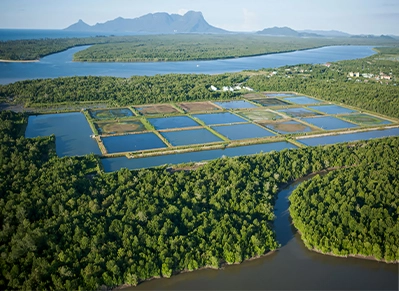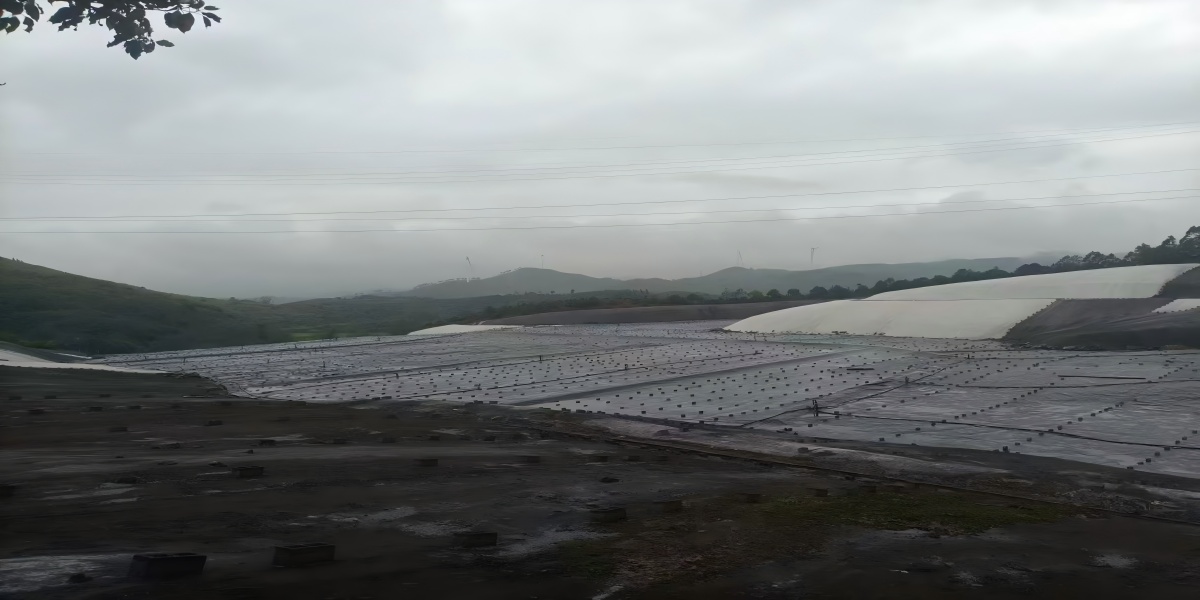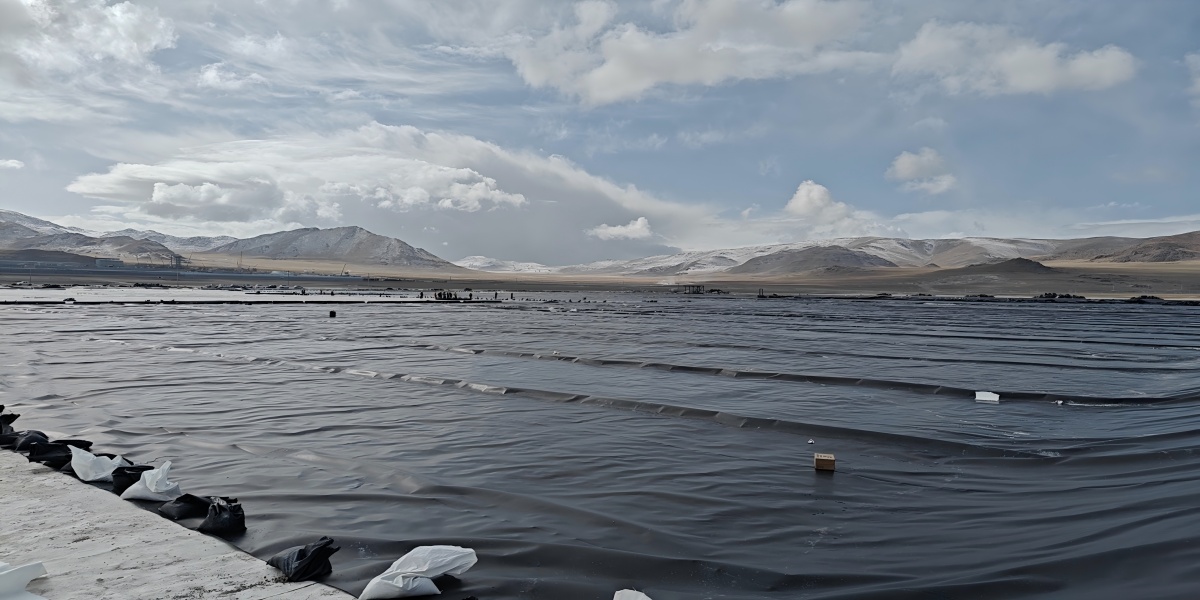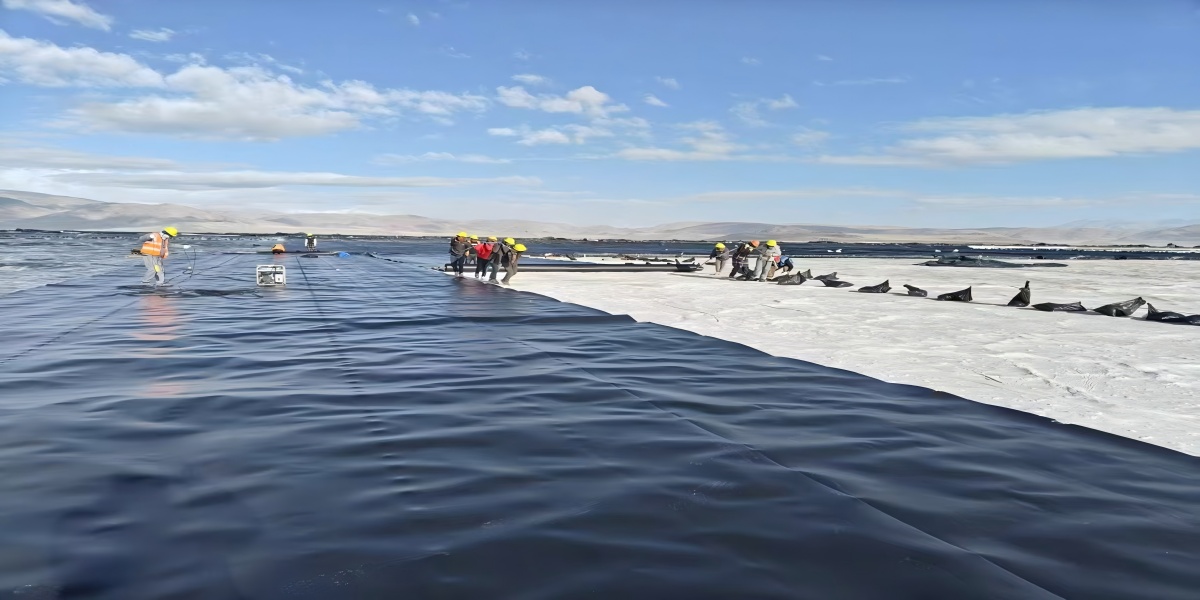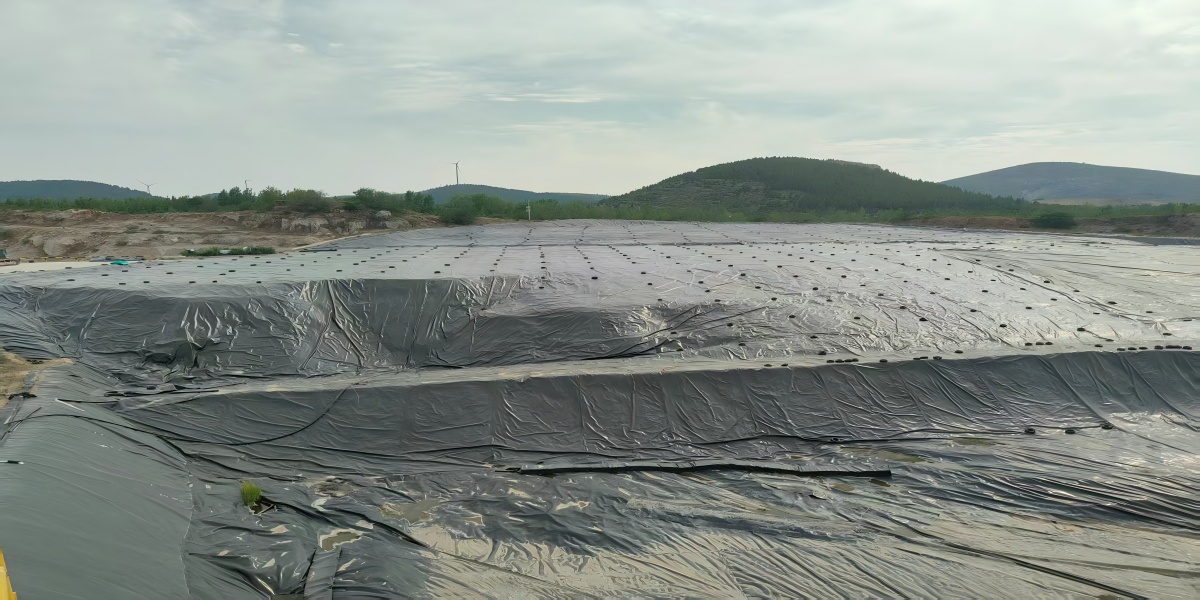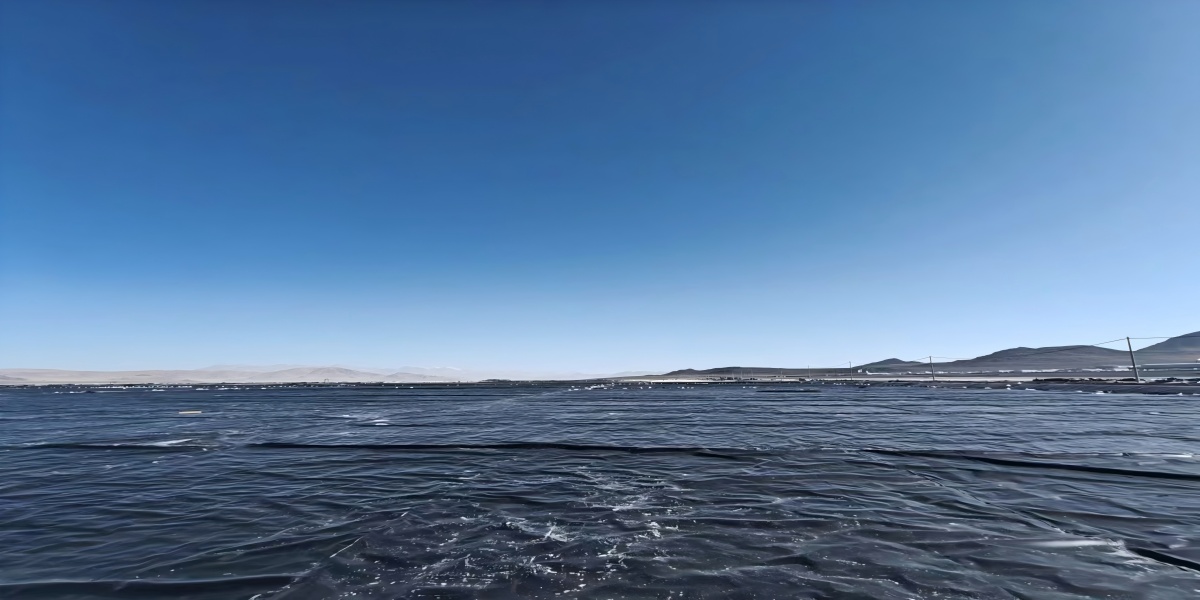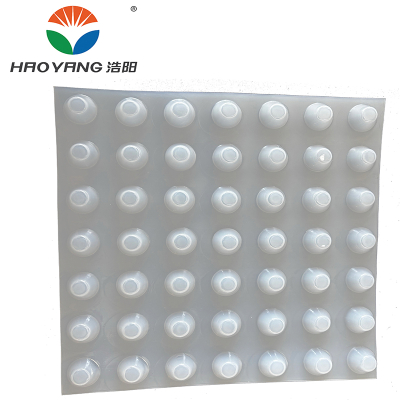What are the Parameters and Models of Geomembranes?
Geomembranes are a indispensable factor of modern-day anti-seepage systems. These impermeable artificial geomembrane liners shape fundamental obstacles in purposes ranging from multi-billion greenback mining heap leach pad liners to nearby fisheries. Understanding their technical parameters and the numerous geomembrane sheet kinds is necessary to choosing the proper answer and making sure challenge longevity, compliance, and cost-effectiveness. This complete information takes an in-depth seem at the core specifications, classification systems, and decision standards that outline geomembrane performance.
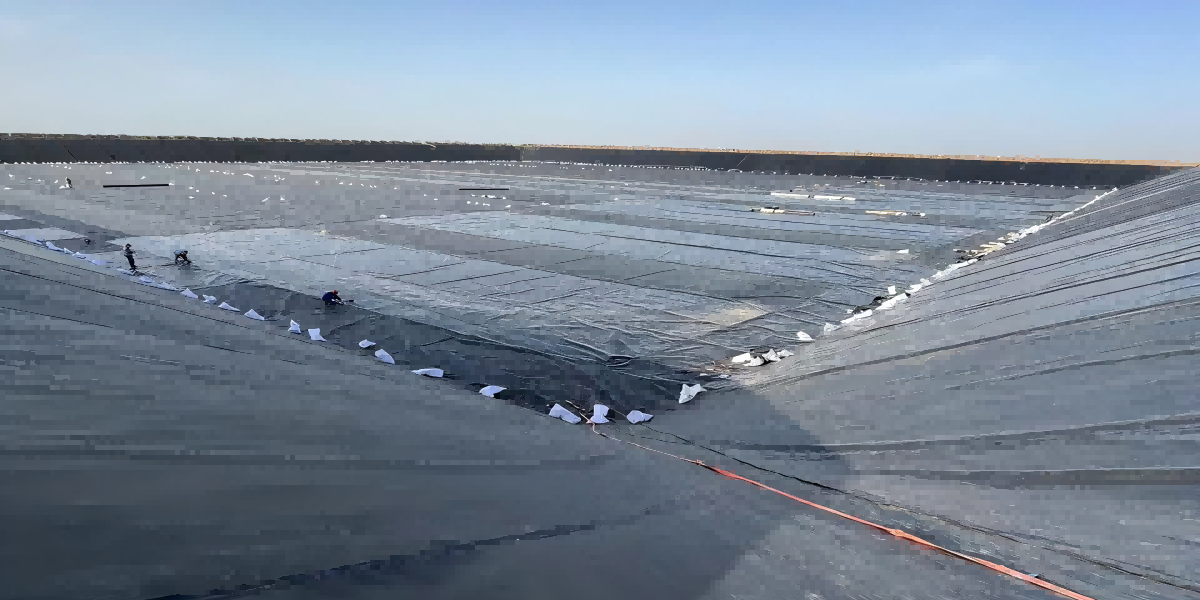 |
I. Defining the key parameters of geomembranes
The overall performance of geomembranes can be quantified via a set of standardized physical, mechanical, hydraulic, sturdiness and environmental parameters. These parameters are fastidiously examined in accordance to global requirements (ASTM, ISO, GRI) and are the groundwork for fabric choice and first-rate assurance.
1. Physical Properties: Basics
- 1.1Thickness
Units: Mainly expressed in mils (1 mil = 0.001 inches) or millimeters (mm) (e.g., 60 mil = 1.5 mm).
- 1.2Thickness Range
Varies tremendously by using material and application:
HDPE/LLDPE: Typically 20 mil (0.5mm) to 200 mil (5.0mm), with forty mil (1.0mm), 60 mil (1.5mm), eighty mil (2.0mm) being very prevalent in annoying functions such as landfills and mining.
PVC: Typically 20 mil (0.5mm) to eighty mil (2.0mm).
EPDM: Typically 30 mil (0.75mm) to 60 mil (1.5mm).
TPO/CPE: Similar fluctuate to PVC.
- 1.3 Impact
Thickness barring prolong influences puncture resistance, tensile strength, and long-term durability. Thicker liners are used for heavy loads, sharp substrates, or extended graph life.
- 1.4 Density
HDPE: High density (≥ 0.940 g/cm³). Provides pinnacle notch chemical resistance, stiffness, and dimensional stability.
MDPE: Medium density (~0.930 - <0.940 g/cm³). Combines flexibility and chemical resistance.
LLDPE: Linear low density (0.915 - 0.930 g/cm³). Excellent flexibility, elongation, and stress cracking resistance.
PVC/TPO/EPDM: Density varies, alternatively is generally reduce than HDPE, which helps with flexibility.
- 1.5 Mass Per Unit Area / Weight
Units: g/m² or oz/yd².
Calculation: Directly related to density and thickness (mass = density × thickness).
Significance: Used for fantastic control, calculating coil weight for shipping/installation, and sometimes as a surrogate for thickness uniformity.
2. Mechanical Properties: Withstands Stress
- 2.1 Tensile Properties (ASTM D6693)
Tensile Strength - Yield & Break: The stress required to yield (permanently deform) or wreck a specimen. Units: kN/m or lbf/in. Essential for withstanding set up stresses, cowl loads, and wind uplift. (e.g., immoderate incredible 60 mil HDPE: Yield Strength ~ 18 kN/m, Break Strength ~ 33 kN/m).
Elongation at Yield & Break: The percentage lengthen in dimension at the yield and ruin points. Indicates flexibility and ductility. HDPE often has reduce elongation than LLDPE or PVC (elongation at yield ~12%, elongation at wreck >700%; LLDPE or PVC elongation at smash >400%). High elongation at smash is quintessential for accommodating foundation settlement.
- 2.2 Tear Resistance
Graves Tear (Initial) (ASTM D1004 - Graves Tear): Resistance to propagation of a preformed minimize beneath tensile load (N or lbf).
Trapezoid Tear (ASTM D5884 - Trapezoid Tear): Measures resistance to tearing without an preliminary cut, normally considered increased advisor of difficulty ordinary overall performance (N or lbf). Essential for puncture resistance and tear propagation resistance.
- 2.3 Puncture Resistance
Index Puncture (ASTM D5514 - Index Puncture): Measures the strain (N or lbf) required for a probe to puncture a geomembrane underneath specific conditions. Simulates a sharp object.
Static Puncture (CBR) (ASTM D6241 - Static Puncture): Measures the load (N or lbf) required to penetrate a geomembrane with a 50mm diameter punch supported thru a CBR die. Simulates blunt objects or localized settlement. Essential for features with rock substrates or waste containing sharp debris.
- 2.4 Impact Resistance (ASTM D1709 - Falling Dart / ASTM D5886 - Puncture Impact)
Measures resistance to dynamic, localized penetration (e.g., falling tool, rock). Reported as energy (Joules J or ft-lbf) or weight (grams) required to fail 50% of the specimens (failure have an have an impact on on height).
- 2.5 Stress Crack Resistance (SCR) (ASTM D5397 / ASTM D6693 - NCTL)
Critical for HDPE. Measures long-term resistance to brittle cracking under constant tensile stress in harsh environments (usually immoderate temperatures and surfactants). Reported as time to failure (hours) at a special utilized stress (e.g., NCTL take a look at at 30% or a hundred percentage yield stress). High tremendous resin and acceptable manufacturing approach are key. Low SCR is the essential failure mode.
3. Hydraulic Performance: Impermeable Barrier
- 3.1 Permeability Coefficient (ASTM E96 Water Vapor Transmission / ASTM D5886 - Liquid Permeability)
Unit: cm/s (liquid). While the geomembrane is surely impermeable to beverages as a whole, the permeability coefficient quantifies the extraordinarily sluggish price of water vapor transmission or molecular diffusion via the intact material. High-quality HDPE permeabilities are normally < 1 x 10⁻¹³ cm/s. This is the predominant feature of impermeability.
- 3.2 Seam Strength & Integrity
Parameters: Destructive Weld Peel Strength (N/mm or lbf/in), Destructive Weld Shear Strength (N/mm or lbf/in), Nondestructive Testing (Air Gun, Spark, Vacuum Box).
Importance: The first-class of a liner relies upon on its welds. The weld should meet or exceed the distinctive peel/shear electricity fee (usually a proportion of the father or mother cloth strength) and reveal continuity thru nondestructive testing.
4. Durability & Environmental Tolerance: Lifetime in Harsh Conditions
- 4.1 UV Resistance (ASTM D7238 / ASTM G154/G155)
Measured by means of exposing samples to accelerated UV radiation (Xenon Arc or Fluorescent UV) and monitoring retention of key mechanical homes (e.g. tensile strength, elongation) over time. High pleasant geomembranes incorporate carbon black (typically 2-3% for HDPE/LLDPE) or specialised UV stabilizers (HALS) to obtain a long time of publicity life. >80% retention has been pronounced after lots of hours of accelerated testing.
- 4.2 Chemical Resistance (ASTM D5747 - Immersion Test)
Evaluates the outcomes of long-term publicity to unique chemical compounds (acids, bases, solvents, oils, leachates) on geomembrane overall performance (mass, dimensions, mechanical properties). HDPE presents the broadest chemical resistance. In aggressive environments (e.g. mining leachates, industrial waste), a chemical compatibility desk for unique materials is critical.
- 4.3 Oxidation Induction Time (OIT) (ASTM D3895 / ASTM D5885)
Standard OIT (Std-OIT): Measures the effectiveness of the inherent antioxidant device at processing temperatures. Indicates preliminary stability.
High Pressure OIT (HP-OIT): Measures steadiness towards oxidative degradation at improved temperatures and pressures. Key indicator of long-term thermo-oxidative steadiness and estimated carrier life. Typically specifies a minimal HP-OIT fee to be retained after publicity (e.g. > 80% after ninety days of immersion).
- 4.4 Temperature Range
Specifies the working temperature restriction at which the geomembrane keeps the required properties. HDPE stays bendy down to -70°C (-94°F) and can be used in non permanent (installation) stipulations up to +70°C (+158°F). Long-term non-stop use temperatures are lower. PVC hardens substantially beneath freezing.
5. Surface Characteristics
- 5.1 Texture
Smooth: Standard surface, best to weld. Low interfacial friction angle.
Textured (coextruded or sprayed): Surface with raised texture. Main advantages:
Significantly will increase interfacial friction perspective (shear strength) on slopes (e.g. landfill caps, reservoir dam walls).
Reduces stresses brought on by means of thermal enlargement and contraction.
Enhances drainage capability in two-layer systems.
- 5.2 Structured (Dimpled/Profiled)
Mainly used for drainage functions requiring excessive conductivity at once on the membrane.
- 5.3 Friction Angle
Measured by means of direct shear check (ASTM D5321) with geosynthetics (geotextiles, geonets) or soil. Rough geomembranes gain greater friction angles (δ > 30°) than clean geomembranes (δ ≈ 10-15°), which is necessary for slope stability.
II. Analysis of the sorts and fashions of geomembranes
Geomembranes are categorised in accordance to the major polymer resin, which determines their simple properties, advantages, obstacles and principal software areas.
1. Polyolefins (Dominant Enterprise & Environmental Safety Anti-seepage)
1.1 High-density Polyethylene (HDPE)
Parameters: Highest density (~0.940-0.965 g/cm³), incredible chemical resistance (widest range), very low permeability, excessive tensile power and modulus (stiffness), incredible UV resistance (containing carbon black), lengthy plan existence (>50+ years). Flexibility and stress cracking resistance are decrease than LLDPE, requiring knowledgeable welding technology. Sensitive to stress cracking (requires top notch resin and SCR testing).
Model: Smooth surface, difficult floor HDPE geomembrane (HDPE Rough Geomembrane) (co-extruded tough surface, sprayed tough surface).
Common thickness: 30 mil (0.75mm), forty mil (1.0mm), 60 mil (1.5mm), eighty mil (2.0mm), a hundred mil (2.5mm), one hundred twenty mil (3.0mm).
Main applications: primary/secondary lining and capping of landfills (Landfill Liner with Texture is regularly used), mining heap leach pad liner, tailings storage services (TSFs), consuming water reservoirs, giant wastewater/sewage swimming pools (as a key issue of industrial containment liner), secondary anti-seepage, tunnel waterproofing. It is the principal pressure for heavy-duty and long-term anti-seepage, and HDPE geomembrane liner (HDPE Geomembrane Liner / HDPE Liner / HDPE Geomembrana / HDPE Membrane / HDPE Geo Membrane) is frequently used.
1.2 Linear Low Density Polyethylene (LLDPE)
Parameters: Lower density than HDPE (~0.915-0.930 g/cm³). Excellent flexibility, elongation and puncture resistance. Excellent low temperature flexibility and stress cracking resistance. Good chemical resistance (but commonly now not as considerable as HDPE). Good UV resistance (with stabilizers). Lower tensile modulus (easier to conform).
Model: Mostly smooth.
Common thicknesses: 20 mil (0.5mm), 30 mil (0.75mm), forty mil (1.0mm), 60 mil (1.5mm).
Main applications: Agricultural ponds (irrigation, manure), aquaculture (fish/shrimp ponds, frequently the usage of LLDPE geomembranes as pond liners (LLDPE Geomembrane for Pond Liners / Pond Liner)), ornamental water features, channel linings, secondary seepage manipulate (less corrosive chemicals), landfill capping. Ideal the place flexibility and conformability are critical.
1.3 Very Low Density Polyethylene (VLDPE)/Flexible Polyethylene (fPE)
Parameters: Very low density (<0.915 g/cm³). Maximized flexibility, elongation (>700%), and puncture/tear resistance. Excellent stress cracking resistance and low temperature performance. Lower tensile electricity than LLDPE or HDPE.
Type: Smooth.
Common thicknesses: 30 mil (0.75mm), forty mil (1.0mm), 60 mil (1.5mm).
Primary Applications: Exposed cowl for landfills or cesspools (high elongation to accommodate settlement/movement), channel linings on uneven substrates, secondary containment the place intense flexibility is required, transient liners. Sometimes referred to as LDPE Liner / Geomembrana LDPE or used for waterproofing, however strictly speakme LDPE (Low Density Polyethylene) differs from VLDPE/fPE in overall performance and use.
1.4 Reinforced Polyethylene (RPE)
Parameters: Typically a VLDPE/fPE substrate with a polyester or nylon reinforcement mesh embedded for the duration of the manufacturing process. Combines the severe flexibility and puncture resistance of fPE with the extensively greater tensile electricity and modulus supplied by way of the reinforcement mesh. Resists stone and tree root puncture.
Type: Typically smooth.
Common thicknesses: 30 mil, forty mil, 60 mil.
Main Applications: Landfill capping (especially on uneven waste), uncovered cover, requiring excessive puncture resistance besides immoderate thickness (such as some aquaculture), channel linings on difficult substrates.
1.5 Thermoplastic Polyolefin (TPO)
Parameters: A mixture of polypropylene (PP) and polyethylene (PE) with a rubber modifier. Good flexibility, UV resistance (no carbon black required, mild shades allowed), weldability, and puncture resistance. Good chemical resistance. Polypropylene (PP) geomembrane residences (PP Geomembrane Properties) are generally mirrored thru TPO or pure PP membranes, with exceptional emphases.
Model: Smooth surface.
Common thicknesses: 30 mil, forty mil, forty five mil, 60 mil.
Main applications: Roofing membranes (popular business flat roofs), ornamental ponds (light colors), partial landfill capping, water features. Both overall performance and aesthetic options. Sometimes used for industrial containment liner.
2. Polyvinyl Chloride (PVC): Flexibility and Processability
Parameters: Flexible due to plasticizers. Excellent processability (easy to cut, can be welded with solvents or warm air), puncture/tear resistance, and conformability. Good chemical resistance to many aqueous solutions, acids, and bases. Susceptible to degradation by way of some solvents, oils, and UV mild (requires UV stabilizers). Plasticizers migrate over time, which may additionally reason embrittlement. Higher permeability than HDPE. Good root resistance.
Model: Glossy.
Common thicknesses: 20 mil (0.5mm), 30 mil (0.75mm), forty mil (1.0mm), 60 mil (1.5mm).
Main applications: Channel linings, ornamental ponds and water features, soil remediation covers, tank linings (secondary), wastewater remedy (less corrosive), transient covers. Valued for ease of set up in complicated geometries. Its flexibility makes it additionally viewed for use on steep slopes in sure conditions (Geomembrane for Steep Slopes), however the friction attitude wants to be cautiously evaluated.
3. EPDM: Rubber Elasticity
Parameters: Thermosetting artificial rubber. Excellent flexibility, elongation and elasticity over a huge temperature vary (-45°C to +125°C). Excellent weathering and UV resistance (intrinsically stable, black). Good resistance to polar components (water, alcohols, ketones). Susceptible to oils, fuels and non-polar solvents. Use tape or liquid adhesive seams (not warmth welding). May be extra without problems punctured than thick PE.
Type: Mainly smooth.
Common thicknesses: 30 mil (0.75mm), forty five mil (1.14mm), 60 mil (1.5mm).
Primary Applications: Roofing membranes (especially residential low-slope roofs), ornamental ponds, irrigation ponds, landfill caps (flexibility is key), water gardens. Known for long-term weathering overall performance and repairability. Its incredible elongation and elasticity make it a candidate for steep slopes (Geomembrane for Steep Slopes) covers or liners.
III. Choosing the Right Model and Parameters: From Specifications to Success
Choosing the satisfactory geomembrane enterprise (Geomembrane Liner Companies) to furnish products is a multi-factor engineering decision. Key concerns include:
1. Application & Fluids
What is contained? (Drinking water, municipal leachate, hazardous chemicals, mining acid, manure, fish?) This will decide whether or not to pick out geomembranes for landfills (Geomembrane for Landfills) or any other type.
What is the unique chemical exposure? (A specified compatibility contrast is required).
What is the required format life? (Landfills: 100+ years; Temporary Ponds: 5-10 years).
2. Site Conditions & Foundations
Steep Slopes Angles? This strongly influences mannequin determination (typically requires a Rough HDPE Geomembrane or unique texture kind to grant enough friction angle).
Foundation Materials? (Rock? Smooth Clay? Needs puncture resistance evaluation).
Seismic Activity? (Higher elongation/strain potential required).
Extreme Temperatures? (High temperatures minimize strength, low temperatures expand brittleness).
Exposure? (UV stabilization required for publicity to UV/sunlight).
3. Regulatory Requirements
Landfills, Mining TSFs, and Potable Water commonly have strict minimal thickness and overall performance specs (e.g., Subtitle D landfills require a minimal of 60 mil HDPE for the foremost liner).
4. Installation & Constructability
Is welding technological know-how available? (HDPE requires extraordinarily expert fusion welders).
Complex Geometry? (PVC, LLDPE, EPDM are less complicated to manage and seam in complicated shapes).
Site get right of entry to and climate conditions?
5. Lifecycle Costs
Consider preliminary cloth prices (e.g., ask Geomembrane Liner Companies / Two-Color Geomembrane Manufacturers for HDPE Liner Price / HDPE Geomembrane Price / Geomembrane Price), set up costs, protection costs, and possible failure costs. The most inexpensive liner upfront might also price the most in the lengthy run if it fails prematurely. For purposes that require visible monitoring or aesthetics, think about Dual Color HDPE Geomembrane / Two-Color Geomembrane, whose coloration layering (Geomembrane Color Layering) layout can surely exhibit neighborhood deformation or damage.
IV. Importance of Quality Manufacturing and Verification
Simply specifying the right parameters is solely half of the battle. It is imperative to make sure that the delivered and hooked up geomembrane meets these specifications:
Resin Quality: Pure resin with constant homes is critical, particularly for SCR overall performance of HDPE.
Manufacturing Process: Advanced extrusion traces with strict manner controls make sure uniform thickness, carbon black dispersion and additive distribution.
Testing: Rigorous in-house and impartial third-party trying out (to ASTM/ISO standards) of uncooked substances and completed merchandise is non-negotiable. Certificates of Analysis (CoA) and Test Reports (TR) must be supplied with shipment.
Installation: The first-class liner can fail due to fallacious installation. Use licensed installers, certified welding processes (WPS/PQR) and complete weld checking out (destructive and non-destructive).
Certification: Look for producers that adhere to diagnosed first-rate requirements (ISO 9001) and cloth specs (e.g., GRI-GM13 for HDPE, GRI-GM17 for LLDPE).
Geomembranes are complicated engineered materials. Their overall performance in quintessential geomembrane functions relies upon on a deep appreciation of parameters – thickness, density, tensile properties, tear strength, puncture strength, stress cracking resistance, permeability, UV stability, chemical resistance, OIT and floor properties. These parameters outline the skills and obstacles of distinct geomembrane sorts (HDPE, LLDPE, fPE, RPE, PVC, TPO, EPDM).
Selecting the proper kind and specifying the splendid parameters is now not a easy box-ticking exercise; it is critical engineering that determines the long-term integrity, environmental protection, security and cost-effectiveness of a project. By carefully making use of the concepts outlined in this information – perception utility requirements, web site conditions, regulatory frameworks and key overall performance symptoms – engineers, designers and assignment proprietors can confidently pick out and set up geomembrane options that grant reliable, long-lasting geomembrane protection. Always work with legitimate producers who supply obvious data, rigorous QA/QC and tested discipline performance. The success of your geomembrane device relies upon on it.
